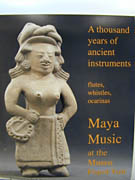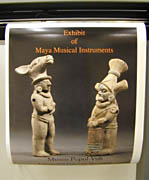Introduction to fine art giclee printers.
 Photographers and art galleries now realize they can produce their own fine art prints (giclee prints). As a result fine art printing is the fastest growing segment of wide format printers.
Photographers and art galleries now realize they can produce their own fine art prints (giclee prints). As a result fine art printing is the fastest growing segment of wide format printers.
Iris no longer manufactures their GPrint giclee printer. ColorSpan giclee printer costs half as much and many people find it produces a better print (the original Iris printer was only an ordinary proofer; it was not originally made to do fine art). Now Improved Technologies has taken over the new improved giclee drum-style printer, their Ixia, available for $75,000. Or you can opt for a Durst Lambda or Lightjet from Cymbolic Sciences for a quarter of a million dollars. Or get photo-realistic quality from a Hewlett-Packard DesignJet 5000ps for $15,000. Fortunately you can now get a printer for museum-quality output from this HP as well as from a Mimaki JV-4 or ColorSpan DisplayMaker X12+.
Since I use a Sinar 4x5 camera, a large format digital scan back (Better Light), as well as Hasselblads, Leicas, and Nikons to do my original photography, you can expect that I am rather demanding when it comes time to print the results.
At the left is a poster still hanging from the Encad large format printer. The photograph was taken using a Schneider lens on a Maya artifact about 6 inches tall, here enlarged to about 32 inches in height (poster size). Photographed at the Museo Popol Vuh, Universidad Francisco Marroquin, Guatemala.
For several years I was content with the Encad wide format printers. Actually still today people who view these wide format prints say the quality is nice. But of course once you come closer you can see the course dot pattern (both the prints shown here were produced from the Encad wide format printer at 300 dpi, its maximum; newer Encad printers now do 600 dpi; Hewlett-Packard DesignJet printers can do 1200 x 600 dpi).
 And, once you have seen the quality produced by a wide format printer from Roland, ColorSpan, or Iris, then it is hard to accept 300 dpi output any longer. But if your main market is signs, posters, banners, POP (point of purchase) advertising then 300 dpi is just fine.
And, once you have seen the quality produced by a wide format printer from Roland, ColorSpan, or Iris, then it is hard to accept 300 dpi output any longer. But if your main market is signs, posters, banners, POP (point of purchase) advertising then 300 dpi is just fine.
To make our point, here are some posters that I produced for an exhibit of 8th century musical instruments (flutes, whistles, and ocarinas of the Maya culture of pre-Columbian Guatemala ). Everyone who saw them wanted to tear them off the wall and take them home. Yet these are just 300 dpi (from my trusty Encad Nova Jet Pro).
But if these same people would see the 600 dpi output of the newer Encad printers, or the 6-color, 8-color, or 12-color output from the Epson 10000, Mimaki JV-4, or ColorSpan, then they would opt for these improved wide format printers.
The FLAAR. Digital Imaging Technology Center has experience with wide format printers. If you would like help in figuring out which wide format printer is best for you, just send our review editor an e-mail via the Survey Form.
There was lots of exaggerated advertising (a polite way of saying potentially false and misleading advertising during 2000-2004. By 2005 the printers were better and manufacturers did not have to lie as much. Now, in 2006, the newest printers such as the HP Z2100 and HP Z3100 offer features no one dreamed of in past years. The Canon iPF6000, iPF8000, and iPF9000 also attracted attention (until the HP printers appeared on the scene).
FLAAR has an Epson 7500, 7600, 7800, 4000, Canon iPF5000, two HP 5000ps, an HP 5500, and a ColorSpan DisplayMaker XII printer in our facilities in Guatemala city. If you would like evaluations of whether we would recommend these, or other, printers, just fill out the Survey Form and we will respond by sending the reports.
If you e-mail us for additional information, it helps if you indicate what kinds of images you intend to print, roughly what your background or experience is (or is not, most of the e-mail we get is from people new to the field of wide format printing, after all that is why you have come to this web site to seek information). Try to provide an approximate indication of your budgetary reality (in other words, are you aware that the best photo-realistic exhibit-quality fine art printers are not free).
We can also help suggest sources for archival inks (inks that do not fade quickly, but last long enough so you and your clients can enjoy the prints). If you are searching for a special kind of paper (media), if it is fine art paper for wide format prints, we can suggest experienced sources.
You can also check out the reviews of our sister web sites, www.FineArtGicleePrinters.org and www.wide-format-printers.org
Calumet sends Cambo Ultima 4x5 camera to the FLAAR. Photo Archive for evaluation (review in process since summer 2001).
Most recently updated September 25, 2006.
Previously updated Dec. 21, 2001 . Design updated 21/07/2008.